60 years of lingerie revolution
A look back on lingerie’s recent history and evolution, from Wonderbra to porno chic and body-positive.
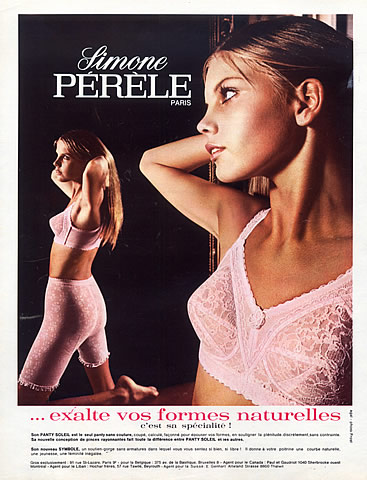 Simone Pérèle, 1964
Simone Pérèle, 1964
Tracing the history of lingerie is like looking back to decades of materials, of styles and images shaped by the evolution of women and society. In their own ways, the sexual revolution, the political movements of the seventies or the democratization of sports have all lead to major transformations in women’s lives, down to their most intimate moments. A fascinating journey that teaches us a lot about the road that has been travelled, sometimes taking a few steps back, but mostly jumping forward.
The 60s : setting free the breasts
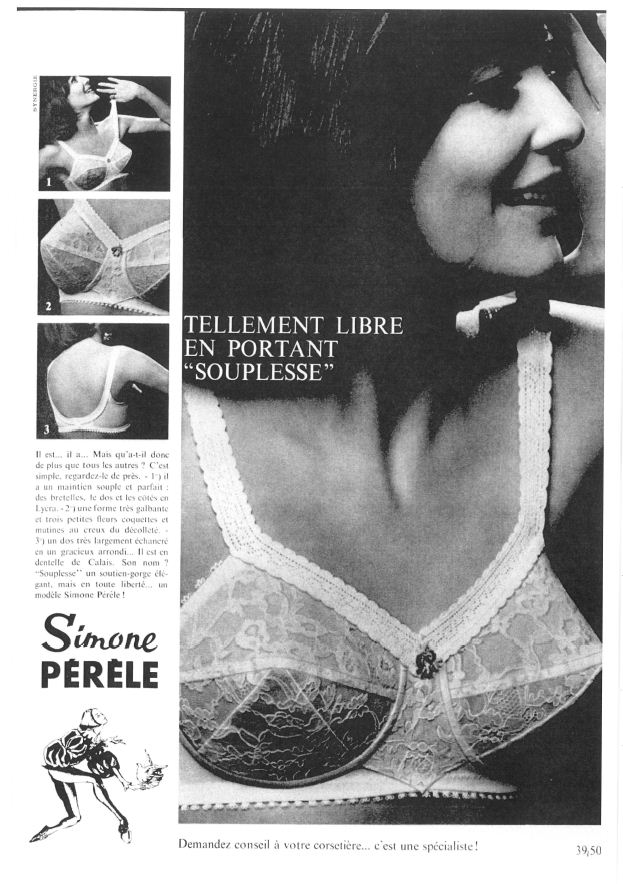 Simone Pérèle, 1965
Simone Pérèle, 1965
It was the first major revolution within the industry since the abolition of the corset : as the movement for women’s fundamental rights emerged, the sixties marked the arrival of softness and comfort. As Paco Rabanne and Courrèges were liberating the body by simplifying the lines of the silhouette, lingerie finally got rid of the restrictive styles of the fifties. The thick, rigid underwear of past decades gave way to functional bras, elastane and darts, supporting breasts with simplified underwiring. At the time, lingerie was not yet seen as a political product, but it did reflect a certain desire for freedom, fuelled by May 68 and the summer of love. The Wonderbra and the monokini emerged, so did the no-bra movement, as lingerie slowly became synonymous with comfort and freedom.
The 70s : It’s all about function
 Chantelle, 1975
Chantelle, 1975
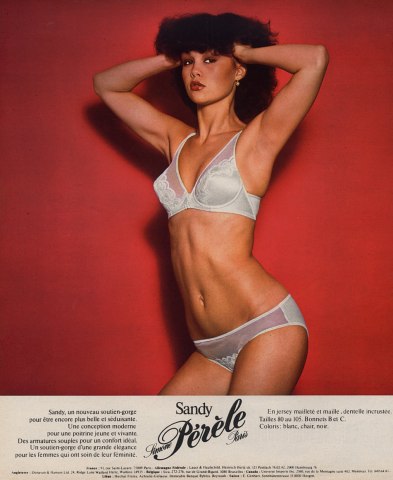 Simone Pérèle, 1977
Simone Pérèle, 1977
In addition to comfort, this decade marked a need for support and a new found desire for simplicity. The innocence of the sixties was followed by environmental issues and world-wide political protests, giving way to a new feminine figure : a woman of words and action in need of functionality and of a certain sense of style. In fashion, the seventies laid ground for a chic, casual silhouette where denim was worn with bo-ho blouses or polyester tops. At Chantelle, molded bras could now adapt to all sizes of breasts, and advertising slogans took a pragmatic turn that highlighted comfort and support. As the years went by, restrained advertisings made room for images in which women striking powerful poses against red backgrounds, announcing radical changes for the next decade.
The 80s : the rise of power
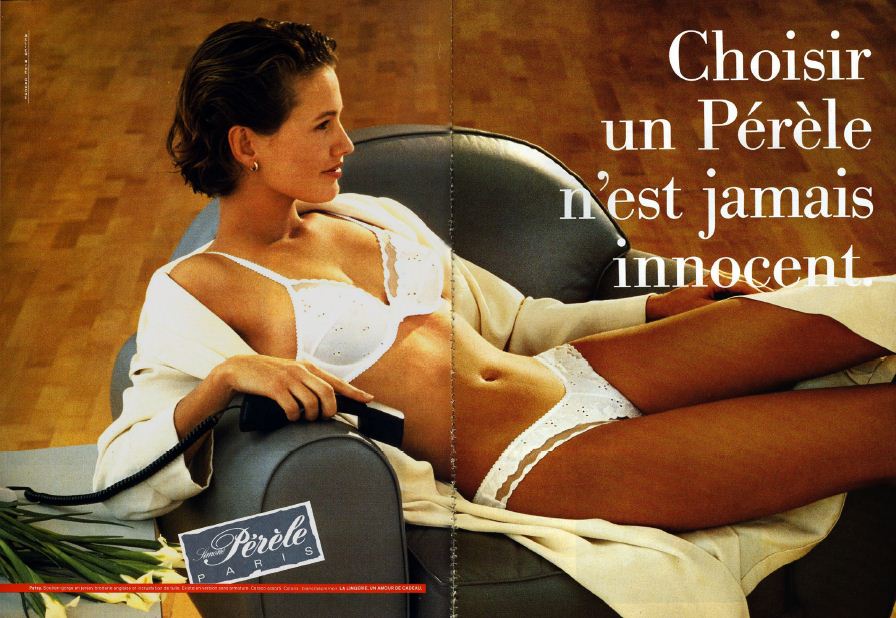 Simone Pérèle, 1987
Simone Pérèle, 1987
It was the decade of the working girl, of the power-silhouette, of Madona wearing a Jean Paul Gaultier corset on stage, through which lingerie became a maximalist, provocative seduction tool. Chantal Thomass brought couture lingerie on the catwalks in the form of guêpières, push-ups and cups, while Simone Pérèle made models pose in seductive poses, with a phone in their hands. Lingerie became both casual and sensational, following women on the road to power. Waists were highlighted, shoulders were strong à la Mugler and Montana and hips were raised, reshaping the curves of the legs. Decades later, we can still see the influence of this confident, uninhibited silhouette on the runways first walked by Cindy Crawford and Linda Evangelista, who forever shaped the image of an independent and seductive woman.
The 90s : when opposites attract
 Aubade, 1992
Aubade, 1992
From hyper sexualization to down-to-earth sobriety, everything came together in the 90s. An iconic moment of advertising, Wonderbra’s “Look me in the eyes” campaign was followed by Calvin Klein images that screamed both sex and comfort, showcasing the simplicity of underwear that only needed a logo to exist. In 1992, Aubade launched its “Lessons in seduction”, a series of audacious ads that zoomed in on breasts and bottoms, where lingerie acted as a provocative tool that appealed to the male gaze. At Chantelle, underwear became everyday objects, photographed as still lives amidst lipsticks, male shirts and other objects of power. And the arrival of microfibre, a small textile revolution, announced the first signs of a light and enveloping lingerie at the service of the body.
The 00s : more sex
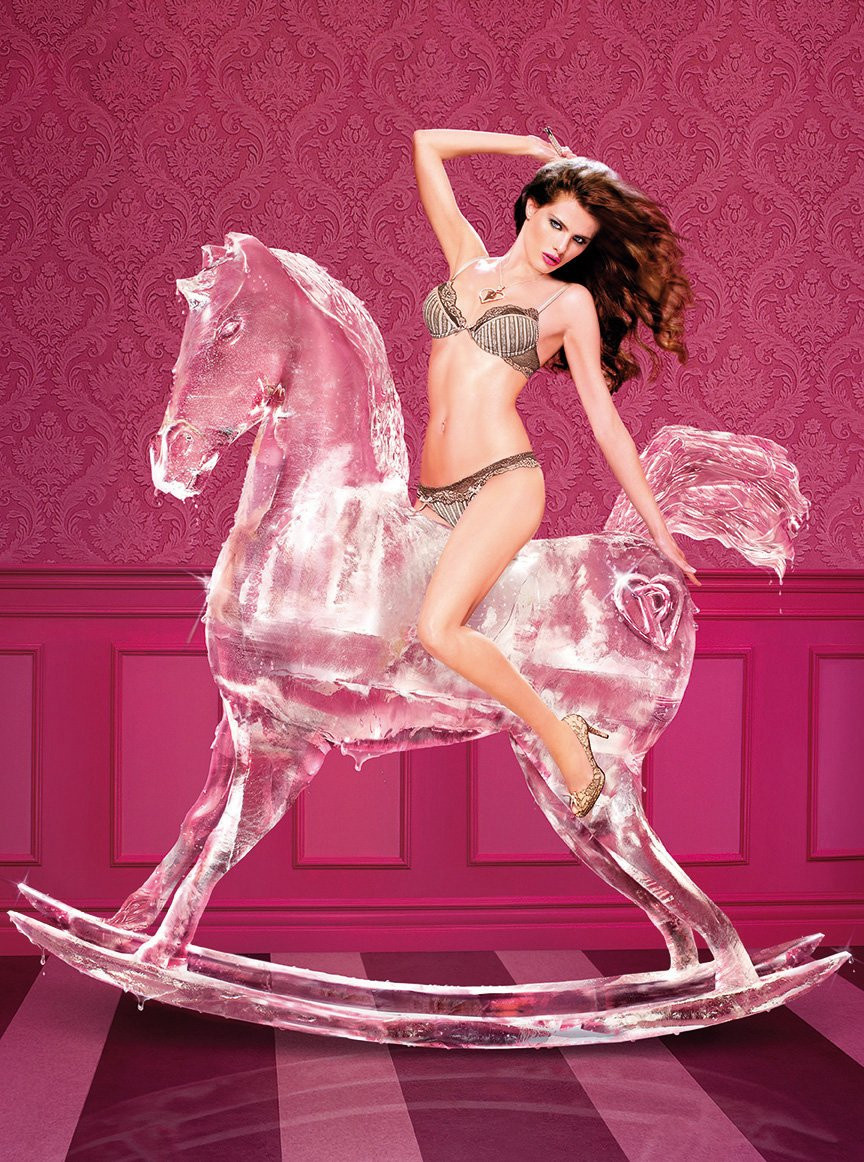 Passionata x David LaChapelle, 2008
Passionata x David LaChapelle, 2008
But the 90s were a long way from body-positivity. The next decade marked the era of porno-chic and trashy esthetics, driven by a booming American pop-culture that showcased hyper-sexualized pop stars. It was the time of reality TV celebrities, Tom Ford and Mario Testino, and David Lachapelle’s Passionata campaigns in which a model rode an ice rocking-horse in an all flashy-pink set. Sex had never sold that well and lingerie, in all its maximalism, was at the service of a physical ideal embodied by the Victoria’s Secret angels. At the same time, a discreet trend was starting to emerge that was already announcing the beginning of the 2020s : in Simone Pérèle’s campaigns women were fully dressed, in an audacious bet to sell lingerie without even showing it. It was all about the image conveyed : sportswomen, artists, anything but models. Instead, normal women were photographed in their everyday lives, in harmony with their environment and, ultimately, with a lingerie which no longer needed to be shown.
The 2020s : the post MeToo era
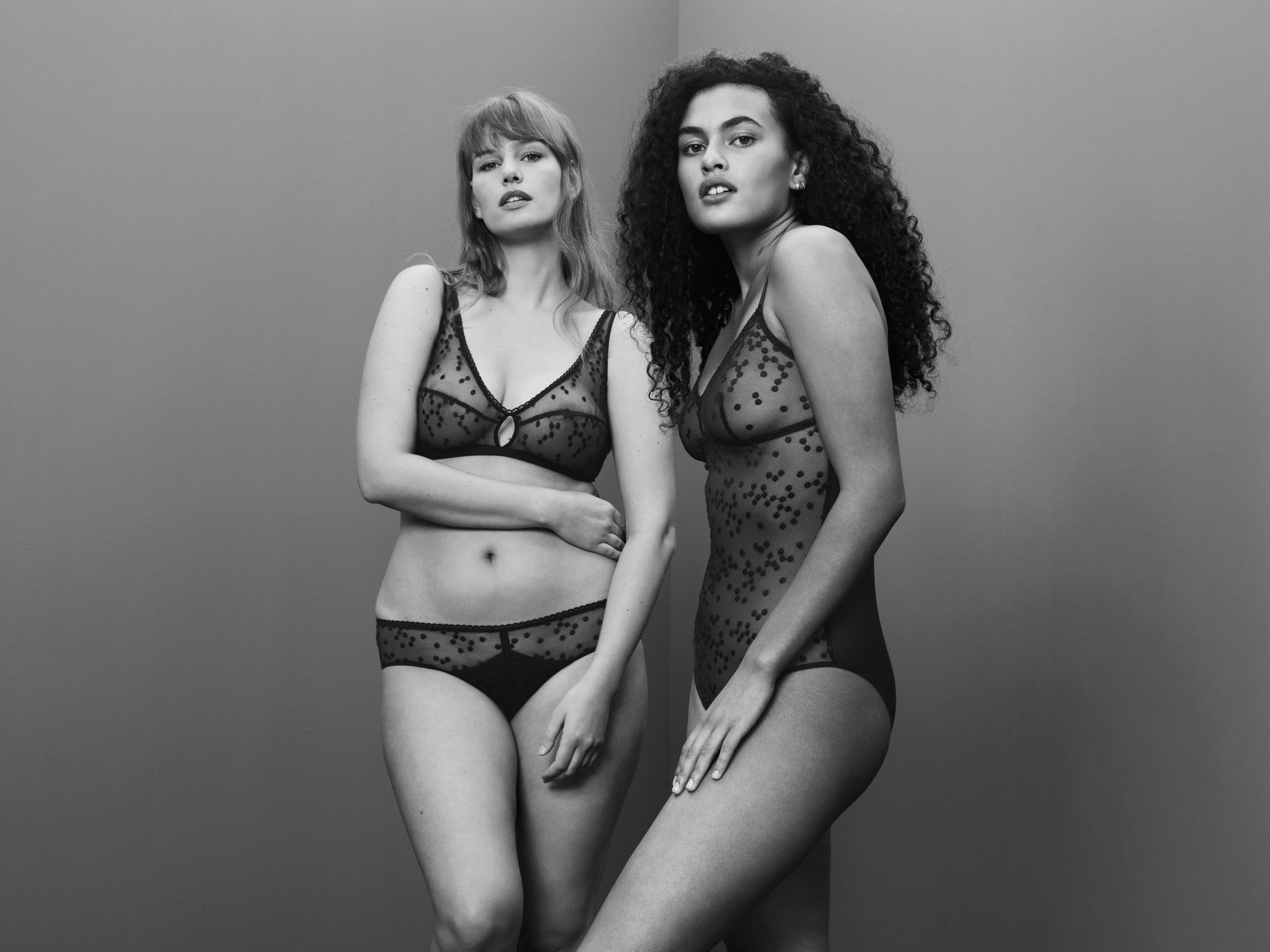 Simone Pérèle, 2021
Simone Pérèle, 2021
At the very end of the 2010s, the MeToo movement put an end to the image of women as objects meant to the serve the male gaze. Lingerie is now back to carrying the social challenges of its time, beginning with the representation of all bodies, without any form of hierarchy. Diversity and inclusivity have become the key words of every marketing campaign that now showcase women of all ages, body shapes and colors. While digital-native brands are seeking balance between a romantic and pragmatic lingerie that can play with fabrics and color combinations, lace gets graphical and shapewear leads the way for a new generation of technical fabrics. Lingerie walks hand in hand with our new sports routine, supporting and sublimating our natural shapes without ever trying to transform them. Whether worn underneath or on top, our underwear now carry fierceness in their style, but a form of humility in their design process, to better serve diverse and dynamic bodies.
